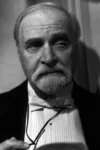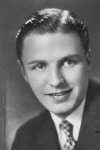Lucrezia Borgia (1922)
October 20, 1922Release Date
Lucrezia Borgia (1922)
October 20, 1922Release Date
Plot.
Where to Watch.
Cast & Crew.

Conrad Veidt
Cesare Borgia

Liane Haid
Lucrezia Borgia (Fandanga)

Albert Bassermann
Papst Alexander VI Rodrigo Borgia

Paul Wegener
Micheletto

Heinrich George
Sebastiano

Adolf E. Licho
Lodowico

William Dieterle
Giovanni Sforza, Herr von Pesaro

Lothar Müthel
Juan Borgia

Alphons Fryland
Alfonso, Prinz von Arragon

Käte Oswald
Naomi

Alexander Granach
ein Gefangener

Anita Berber
Gräfin Julia Orsini

Lyda Salmonova
Diabola, Tierbändigerin

Mary Douce
Florentina

Harry Scheff
Writer

Max Pohl
Fratelli, Waffenschmied

Adele Sandrock
Die Äbtissen

Wilhelm Diegelmann
Wirt

Philipp Manning
Diener Cesares

Hugo Döblin
Diener Cesares

Ernst Pittschau
Manfredo

Clementine Plessner
Fratellis Frau

Viktoria Strauß
Rosaura

Tibor Lubinszky
Gennaro, Page
Details.
Release DateOctober 20, 1922
StatusReleased
Running Time1h 36m
Last updated:
This Movie Is About.
Wiki.
Lucrezia Borgia is a 1922 German silent historical film directed by Richard Oswald and starring Conrad Veidt, Liane Haid, Paul Wegener, and Albert Bassermann. It was based on a novel by Harry Sheff, and portrayed the life of the Renaissance Italian aristocrat Lucrezia Borgia (1480–1519). Botho Hoefer and Robert Neppach worked as the film's art directors, designing the period sets needed. It was shot at the Tempelhof Studios in Berlin. Karl Freund was one of the cinematographers. Famed French director Abel Gance remade the film in 1935.
Cesare Borgia (Veidt) is a monstrous villain who will do anything for pleasure and power, even seducing his own cousin Lucrezia (Haid) and murdering his male siblings. The Borgias were a medieval family known for their corruption under the rule of Pope Alexander VI. Lucrezia Borgia changed real life siblings Cesare and Lucrezia Borgia into cousins, with Cesare and Juan referred to as "the nephew(s) of the Pope", not his sons. This film version made Lucrezia a more sympathetic character, blaming Cesare for causing her indiscretions. Director Richard Oswald's depiction of the family was seen as an attack on the Catholic Church, thus the film was not able to be shown in the U.S. until 1928, and even then the American prints were edited down to 75 minutes.
Richard Oswald directed a number of classic horror films, including The Picture of Dorian Gray (1917), Eerie Tales (1919), The Hound of the Baskervilles (1914-1915), and Uncanny Stories (1932), a remake of the 1919 film. Conrad Veidt and Paul Wegener were in the cast. Actor William Dieterle later moved to Hollywood where he directed the Charles Laughton version of The Hunchback of Notre Dame in 1939.
You May Also Like.

Fifty Shades Darker (2017)

Once Upon a Deadpool (2018)

Naruto the Movie: Ninja Clash in the Land of Snow (2004)

Kuch Kuch Hota Hai (1998)

Think Like a Man Too (2014)

Naruto to Boruto: The Live 2019 (2019)

Naruto: The Lost Story - Mission: Protect the Waterfall Village! (2003)

Top Cat: The Movie (2011)

Battles Without Honor and Humanity: Final Episode (1974)

Kamiusagi Rope x Boruto: Naruto Next Generations (2017)

Main Krishna Hoon (2013)

New Mischief by Emil (1972)

Main Theme (1984)

Back to Hannibal: The Return of Tom Sawyer and Huckleberry Finn (1990)

The Last Six Degrees of Celebration (2018)

Bat (2018)

Main Line to Terror (1975)

Painting for the main bedroom (2020)

Hello...?






